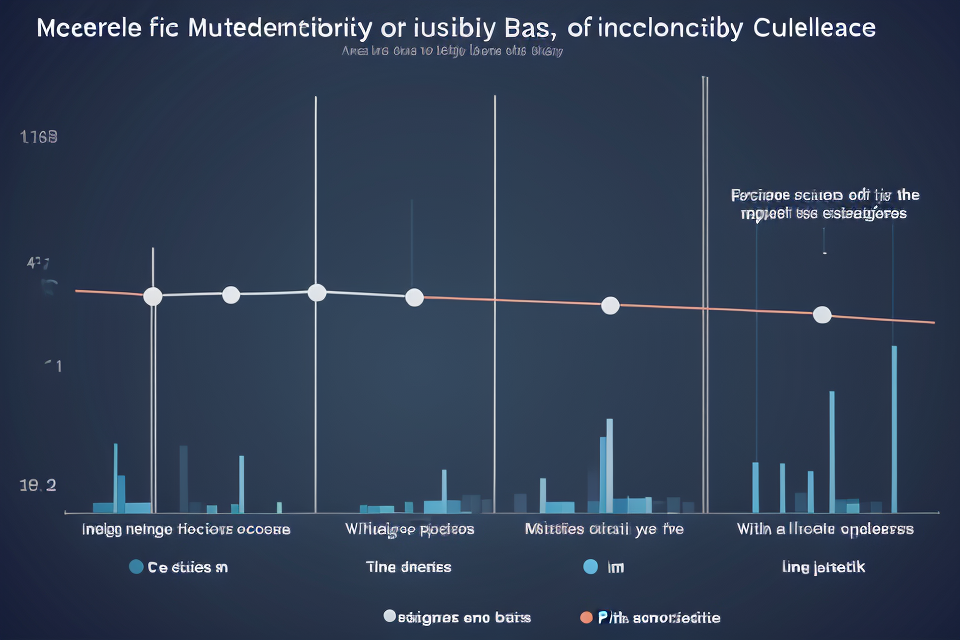
Data is the lifeblood of modern businesses, and the quality of that data can make or break a company. But when it comes to evaluating data quality, two key metrics come to mind: accuracy and precision. Which one is more important? In this article, we’ll explore the differences between accuracy and precision and help you determine which one is the right choice for your business needs. Whether you’re a data scientist, analyst, or just someone who deals with data on a daily basis, this article will give you a better understanding of how to evaluate data quality and make informed decisions. So, let’s dive in and find out what’s more important for data quality: accuracy or precision?
In general, both accuracy and precision are important for data quality. Accuracy refers to how close the data is to the true value or concept being measured, while precision refers to the consistency of the data within a given set. It is important to have accurate data because it is used to make decisions and inform business strategies. However, it is also important to have precise data because it allows for better analysis and comparisons. Ultimately, the importance of accuracy versus precision will depend on the specific use case and goals of the data analysis.
Understanding Accuracy and Precision
Accuracy
Definition
Accuracy refers to the degree to which the data correctly represents the real-world phenomenon it aims to measure or represent. In other words, it is the extent to which the data reflects the true state of affairs. Accuracy is concerned with the “correctness” of the data.
Importance
Accuracy is crucial for data quality because it determines the reliability and validity of the data. High-quality data that is accurate can lead to better decision-making, more effective processes, and improved outcomes. Accurate data can also help identify trends, patterns, and relationships that can inform strategic planning and forecasting.
Moreover, accurate data is essential for building trust and credibility with stakeholders, whether they are internal or external to the organization. When data is accurate, it enables organizations to make informed decisions and take appropriate actions based on reliable information.
Challenges
Despite its importance, achieving accuracy in data can be challenging. There are several factors that can affect the accuracy of data, including:
- Data entry errors: Human error can lead to incorrect data entry, which can compromise the accuracy of the data.
- Data integration issues: When data is collected from multiple sources, integrating it can be challenging, and errors can occur during the process.
- Incomplete data: Incomplete data can lead to inaccurate results if important information is missing.
- Confounding variables: Other variables can influence the data and make it difficult to determine the true relationship between variables of interest.
Overall, accuracy is a critical component of data quality, and organizations must take steps to ensure that their data is accurate to maintain trust and credibility with stakeholders and to make informed decisions based on reliable information.
Precision
Precision refers to the degree of consistency or reproducibility of a measurement or observation. In other words, it is the extent to which repeated measurements or observations produce the same results. Precision is a crucial aspect of data quality because it helps to ensure that the data collected is consistent and reliable.
Precision is important in various fields, including science, engineering, and finance. For example, in a scientific study, precision is essential to ensure that the results are consistent and reliable. In engineering, precision is crucial to ensure that designs and measurements are accurate and consistent. In finance, precision is essential to ensure that financial transactions are recorded accurately and consistently.
However, achieving precision in data collection can be challenging. There are several factors that can affect the precision of data, including the quality of the measurement tools, the skill of the person collecting the data, and the environmental conditions in which the data is collected. For example, if the measurement tools are not calibrated correctly, the data collected may not be precise. Similarly, if the person collecting the data is not trained properly, the data may not be precise. Finally, if the environmental conditions are not controlled, the data collected may not be precise.
Overall, precision is a critical aspect of data quality, and it is essential to ensure that data is collected with a high degree of precision to ensure that it is reliable and consistent.
Evaluating Data Quality
Data Cleaning
Data cleaning is a crucial step in evaluating data quality. It involves preparing data for analysis by identifying and correcting errors, inconsistencies, and missing values. Data cleaning is essential because it helps to ensure that the data is accurate, complete, and reliable.
There are several techniques used in data cleaning, including:
Data Preparation
Data preparation involves transforming raw data into a format that is suitable for analysis. This may include converting data from different sources into a common format, merging datasets, or removing duplicate records.
Data Validation
Data validation involves checking data for errors and inconsistencies. This may include checking for missing values, outliers, or data entry errors. Validation can be done manually or using automated tools.
Data Transformation
Data transformation involves converting data into a different format or unit of measurement. This may include converting currency, units of measurement, or date formats. Transformation can also involve combining data from different sources into a single dataset.
In addition to these techniques, data cleaning may also involve removing irrelevant data, standardizing formats, and filling in missing values using statistical methods.
Overall, data cleaning is a critical step in evaluating data quality. By identifying and correcting errors and inconsistencies, data cleaning helps to ensure that the data is accurate, complete, and reliable, which is essential for making informed decisions based on data.
Data Analysis
When evaluating data quality, data analysis plays a crucial role in identifying the strengths and weaknesses of the data. There are several techniques that can be used to analyze data quality, including statistical analysis, machine learning algorithms, and model evaluation.
Statistical Analysis
Statistical analysis is a technique used to analyze data by identifying patterns and relationships in the data. This technique involves using statistical methods such as mean, median, mode, standard deviation, and correlation to identify any anomalies or outliers in the data. By identifying these anomalies, data analysts can determine the accuracy and precision of the data.
Machine Learning Algorithms
Machine learning algorithms are another technique used to analyze data quality. These algorithms can be used to identify patterns and relationships in the data, as well as to detect any anomalies or outliers. By using machine learning algorithms, data analysts can determine the accuracy and precision of the data by comparing the predicted results with the actual results.
Model Evaluation
Model evaluation is a technique used to assess the performance of a machine learning model. This technique involves comparing the predicted results with the actual results to determine the accuracy and precision of the model. By evaluating the model, data analysts can identify any weaknesses in the model and make necessary adjustments to improve the accuracy and precision of the data.
In conclusion, data analysis plays a critical role in evaluating data quality. By using statistical analysis, machine learning algorithms, and model evaluation, data analysts can determine the accuracy and precision of the data and make necessary adjustments to improve the quality of the data.
Data Interpretation
When evaluating data quality, data interpretation plays a crucial role in ensuring that the data is accurate and meaningful. The process of data interpretation involves the visualization of data, error identification, and decision-making.
Data Visualization
Data visualization is the process of creating visual representations of data to aid in interpretation and analysis. It involves the use of charts, graphs, and other visual aids to display data in a more accessible and understandable format. Effective data visualization can help to identify patterns, trends, and anomalies in the data, making it easier to identify errors and inaccuracies.
Error Identification
Error identification is the process of identifying and correcting errors in the data. This can involve the use of statistical methods, data validation checks, and manual review to identify and correct errors. It is important to ensure that all errors are identified and corrected to ensure that the data is accurate and reliable.
Decision-Making
Data interpretation is also critical in the decision-making process. When data is used to make decisions, it is important to ensure that the data is accurate and reliable. Data interpretation can help to ensure that the data is accurate and meaningful, and that it is being used appropriately to inform decision-making.
In conclusion, data interpretation is a critical component of evaluating data quality. It involves the visualization of data, error identification, and decision-making, and is essential for ensuring that data is accurate and meaningful.
Accuracy vs. Precision
Differences
- Accuracy refers to the degree to which the data reflects the true underlying phenomenon being measured. It is concerned with the correctness of the data, i.e., whether the data represents the reality it claims to represent.
- Precision refers to the consistency or reproducibility of the data, i.e., the degree to which repeated measurements of the same phenomenon yield the same result. It is concerned with the repeatability of the data, i.e., how close the results are when measured multiple times under the same conditions.
Measurement
- Accuracy is measured by comparing the data to a standard or a true value, such as comparing a measured weight to the true weight of an object.
- Precision is measured by calculating the degree of agreement among repeated measurements of the same phenomenon, such as calculating the average of multiple measurements of the same weight.
Examples
- Accuracy example: A study measuring the prevalence of a disease in a population may have high accuracy if the sample used in the study is representative of the entire population and the measurement methods are correct.
- Precision example: A laboratory testing a patient’s blood sugar level may have high precision if the laboratory consistently obtains the same result when measuring the same patient’s blood sugar level on different days.
Trade-offs
Pros and Cons of Accuracy
- Pros:
- Higher accuracy typically means lower error rates, leading to more reliable data.
- Improved accuracy can enhance decision-making and business outcomes.
- Cons:
- High accuracy may require more extensive data collection and processing, which can be time-consuming and costly.
- In some cases, striving for absolute accuracy may not be necessary or practical, leading to disproportionate resources allocated to achieving perfect accuracy.
Pros and Cons of Precision
+ Higher precision indicates a more focused and targeted dataset, which can lead to better insights and more effective decision-making.
+ Improved precision can reduce noise and irrelevant data, streamlining data analysis and visualization.
+ Focusing solely on precision may lead to a reduction in sample size, potentially reducing the overall representativeness of the dataset.
+ In some cases, high precision may come at the cost of accuracy, as it may involve filtering out valuable data points or oversampling specific categories.
Real-world Scenarios
In certain industries, such as healthcare or finance, accuracy is of paramount importance due to the critical nature of the decisions made based on the data. In these cases, sacrificing some precision for the sake of accuracy may be necessary.
On the other hand, in fields like marketing or social media analysis, precision may be more important, as the focus is on understanding specific customer segments or target audiences. In these scenarios, sacrificing some accuracy for the sake of precision may be acceptable.
Data Quality Impact
The trade-offs between accuracy and precision have a direct impact on data quality. Data that is both accurate and precise is ideal, but achieving this balance can be challenging. Striking the right balance depends on the specific use case, the quality of the data being collected, and the desired outcomes of the analysis.
In some cases, it may be necessary to prioritize one over the other, depending on the goals of the analysis and the potential consequences of inaccurate or imprecise data. Ultimately, the choice between accuracy and precision should be guided by the specific needs and objectives of the project or organization.
Improving Data Quality
Best practices
Data governance
Effective data governance is crucial for ensuring data quality. This involves establishing policies, procedures, and standards for data management. These guidelines should be clear, comprehensive, and consistent across the organization. They should cover aspects such as data definition, data classification, data ownership, data security, and data access.
Data governance also involves the creation of roles and responsibilities for managing data. This includes designating data stewards and data custodians who are responsible for ensuring that data is accurate, complete, and up-to-date. Data governance should be supported by technology, such as data quality tools and data management platforms, which can automate data quality checks and ensure compliance with data governance policies.
Data standardization
Data standardization is the process of ensuring that data is consistent and follows a common format. This is important for ensuring that data is accurate and can be easily analyzed and compared. Standardization involves defining data formats, data structures, and data codes.
Data standardization can be achieved through the use of data mapping and data cleansing tools. These tools can identify and correct inconsistencies in data, such as misspellings, duplicate data, and incomplete data. Standardization can also involve the creation of data dictionaries and data glossaries, which provide a common understanding of data definitions and meanings.
Data monitoring
Data monitoring involves the continuous assessment of data quality. This involves tracking data accuracy, completeness, consistency, and timeliness. Data monitoring should be performed at various stages of the data lifecycle, from data collection to data analysis.
Data monitoring can be achieved through the use of data quality tools, which can automatically detect data anomalies and errors. These tools can also provide alerts and notifications when data quality thresholds are not met. Data monitoring should be supported by a data quality culture, where data quality is a priority and all stakeholders are committed to improving data quality.
By implementing these best practices, organizations can improve data quality and ensure that their data is accurate, complete, and reliable.
Tools and technologies
There are a variety of tools and technologies available to improve data quality. Some of the most effective methods include:
- Data validation tools: These tools can help identify and correct errors in data by comparing it against a set of predefined rules or criteria. This can include checking for missing values, outliers, and inconsistencies in data.
- Machine learning libraries: Machine learning algorithms can be used to identify patterns and anomalies in data, and can help improve data quality by identifying and correcting errors.
- Cloud computing platforms: Cloud computing platforms offer a variety of tools and services that can help improve data quality, including data storage, processing, and analysis. These platforms can also provide access to large amounts of data, which can be useful for training machine learning models and improving data accuracy.
It’s important to note that while these tools and technologies can be helpful in improving data quality, they are not a substitute for proper data management practices. Data quality should always be a priority when collecting, storing, and analyzing data, and organizations should have clear policies and procedures in place to ensure that data is accurate, complete, and reliable.
Continuous improvement
Continuous improvement is a key aspect of ensuring data quality. It involves constantly evaluating and improving the processes and methods used to collect, store, and analyze data. This can be achieved through the implementation of feedback loops, the use of quality metrics, and the optimization of processes.
Feedback loops
Feedback loops are an essential component of continuous improvement. They involve gathering feedback from stakeholders and using it to make improvements to the data collection and analysis processes. This feedback can come from a variety of sources, including customers, employees, and external partners. By incorporating feedback into the data quality improvement process, organizations can ensure that they are meeting the needs of their stakeholders and that the data they are collecting is relevant and useful.
Quality metrics
Quality metrics are another important tool for continuous improvement. These metrics provide a way to measure the quality of the data being collected and to identify areas where improvements can be made. Examples of quality metrics include accuracy, completeness, and timeliness. By regularly monitoring these metrics, organizations can identify trends and patterns in their data and take corrective action as needed.
Process optimization
Process optimization is the final key component of continuous improvement. It involves identifying inefficiencies and bottlenecks in the data collection and analysis processes and making changes to improve efficiency and effectiveness. This can involve automating manual processes, streamlining workflows, and implementing new technologies or tools. By optimizing their processes, organizations can reduce errors and improve the overall quality of the data they collect and analyze.
Recap
- Accuracy and precision are both important aspects of data quality.
- Accuracy refers to the correctness of the data, while precision refers to the consistency of the data.
- Improving data quality requires a combination of improving accuracy and precision.
- Key takeaways include understanding the difference between accuracy and precision, and the importance of balancing both in data quality improvement efforts.
- Final thoughts suggest that a focus on improving both accuracy and precision is necessary for achieving high-quality data.
Future directions
Emerging trends
- Automated Data Quality Management: As data continues to grow exponentially, automation is becoming increasingly important for maintaining data quality. Automated data quality management tools can monitor data in real-time, detect and correct errors, and ensure compliance with data governance policies.
- Explainable AI for Data Quality: Explainable AI (XAI) is an emerging trend that focuses on making AI models more transparent and interpretable. This can help data scientists understand how AI models make decisions and identify potential biases or errors in the data. XAI can be particularly useful in improving data quality by identifying and correcting errors in machine learning models.
Research opportunities
- Developing Novel Metrics for Data Quality: There is a need for developing new metrics for measuring data quality. While existing metrics such as accuracy, precision, and recall are widely used, they may not always capture the nuances of data quality. Researchers can explore developing new metrics that take into account different domains and use cases.
- Improving Data Quality in Real-Time: Real-time data processing is becoming increasingly important in modern applications. Researchers can explore developing algorithms and techniques for improving data quality in real-time, such as detecting and correcting errors as they occur.
Real-world applications
- Healthcare: Healthcare is a domain where data quality is critical. Researchers can explore developing algorithms and techniques for improving data quality in electronic health records (EHRs), genomic data, and other healthcare datasets.
- Finance: Financial data is subject to strict regulations and compliance requirements. Researchers can explore developing algorithms and techniques for improving data quality in financial datasets, such as detecting fraud and ensuring compliance with regulations.
FAQs
1. What is the difference between accuracy and precision?
Accuracy refers to how close a measurement or calculation is to the true value or target. In other words, it measures how correct a result is. Precision, on the other hand, refers to the consistency or reproducibility of a measurement or calculation. It measures how close repeated measurements or calculations are to each other.
2. Which one is more important for data quality, accuracy or precision?
Both accuracy and precision are important for data quality, but the relative importance depends on the specific context and application. In general, accuracy is more important when the goal is to minimize errors or mistakes, while precision is more important when the goal is to ensure consistent or repeatable results.
3. Can accuracy and precision be improved simultaneously?
Yes, accuracy and precision can be improved simultaneously by using better measurement tools, calibration methods, and quality control procedures. For example, using a more accurate scale or caliper can improve both accuracy and precision. Similarly, regularly calibrating equipment and following standard operating procedures can help ensure consistent and accurate results.
4. How do you evaluate the accuracy and precision of data?
To evaluate the accuracy and precision of data, you can use statistical measures such as mean, median, and standard deviation. You can also use visualization tools such as histograms and scatter plots to identify patterns and outliers. Additionally, you can compare the results of multiple measurements or calculations to assess both accuracy and precision.
5. Can accuracy and precision be compromised?
Yes, accuracy and precision can be compromised by various factors such as human error, equipment malfunction, and data corruption. It is important to identify and mitigate these factors by implementing proper training, maintenance, and security protocols.


